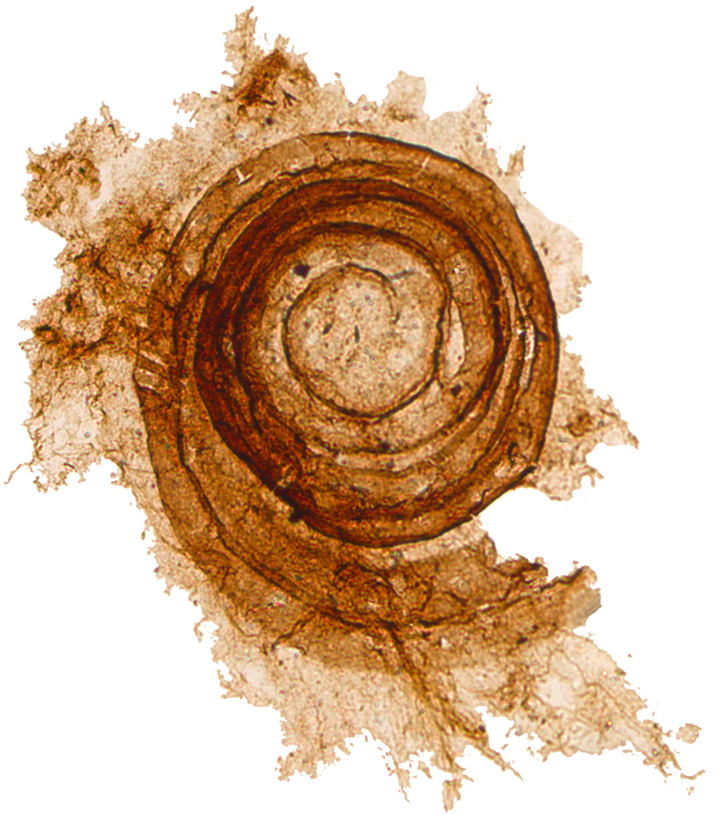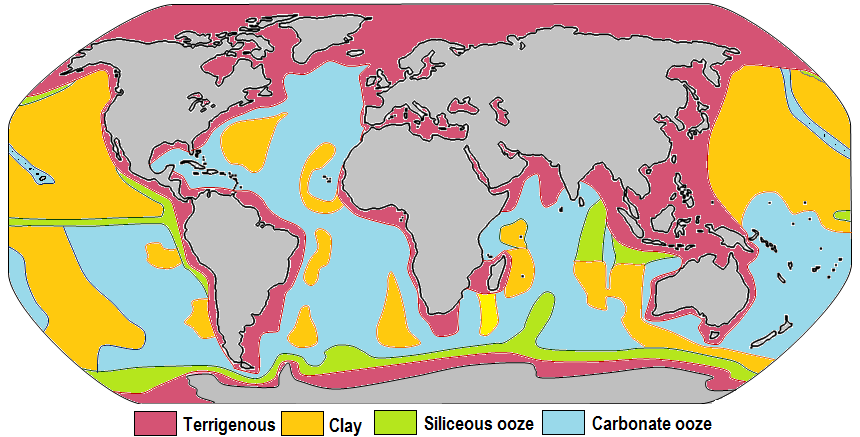|
Silicoflagellate
The silicoflagellates (order Dictyochales) are a small group of unicellular photosynthetic protists, or algae, belonging to the supergroup of eukaryotes known as Stramenopiles. They behave as plankton and are present in oceanic waters. They are well-known from harmful algal blooms that cause high mortality of fish. Additionally, they compose a rich fossil record represented by their silica skeletons. Morphology The silicoflagellates are unicellular protists, composed of cells with one emergent flagellum and a siliceous skeleton constructed from a network of hollow rods outside of the cytoplasm. The morphology of the skeleton can vary greatly, from a simple ring, an ellipse or triangle, to a more complex and complete arrangement of rods. For example, in '' Dictyocha fibula'' (pictured) the skeleton rods are arranged in a series of peripheral polygons surrounding a central hexagon. These skeletons form a small component of marine sediments, and are well-known microfossils ... [...More Info...] [...Related Items...] OR: [Wikipedia] [Google] [Baidu] |
Octactis
''Octactis'' is a genus of silicoflagellates, marine photosynthetic unicellular protists that take the form of either flagellates or axopodial amoebae. Described by Josef Schiller in 1925, ''Octactis'' contains various species of marine phytoplankton, some of them responsible for algal blooms that are toxic to fish. Characteristics ''Octactis'' species are unicellular protists that appear as several different multinucleate forms (i.e. with multiple nuclei). The most prevalent form is as amoebae surrounded by an external, basket-like siliceous skeleton, consisting of two conspicuous rings: a smaller apical ring supported by short struts that are attached to a larger basal ring. The skeleton pikes sometimes occur on the surface of the basal ring. The large window that the apical ring encloses is undivided. Other forms also present are naked amoebae and sometimes mucocyst-bearing amoebae. Both skeleton-bearing and naked cells present a long flagellum. The mucocysts appe ... [...More Info...] [...Related Items...] OR: [Wikipedia] [Google] [Baidu] |
Protist
A protist ( ) or protoctist is any eukaryotic organism that is not an animal, land plant, or fungus. Protists do not form a natural group, or clade, but are a paraphyletic grouping of all descendants of the last eukaryotic common ancestor excluding land plants, animals, and fungi. Protists were historically regarded as a separate taxonomic kingdom known as Protista or Protoctista. With the advent of phylogenetic analysis and electron microscopy studies, the use of Protista as a formal taxon was gradually abandoned. In modern classifications, protists are spread across several eukaryotic clades called supergroups, such as Archaeplastida ( photoautotrophs that includes land plants), SAR, Obazoa (which includes fungi and animals), Amoebozoa and " Excavata". Protists represent an extremely large genetic and ecological diversity in all environments, including extreme habitats. Their diversity, larger than for all other eukaryotes, has only been discovered in rece ... [...More Info...] [...Related Items...] OR: [Wikipedia] [Google] [Baidu] |
Microfossil
A microfossil is a fossil that is generally between 0.001 mm and 1 mm in size, the visual study of which requires the use of light or electron microscopy. A fossil which can be studied with the naked eye or low-powered magnification, such as a hand lens, is referred to as a macrofossil. Microfossils are a common feature of the geological record, from the Precambrian to the Holocene. They are most common in deposits of marine environments, but also occur in brackish water, fresh water and terrestrial sedimentary deposits. While every kingdom of life is represented in the microfossil record, the most abundant forms are protist skeletons or microbial cysts from the Chrysophyta, Pyrrhophyta, Sarcodina, acritarchs and chitinozoans, together with pollen and spores from the vascular plants. Overview A microfossil is a descriptive term applied to fossilized plants and animals whose size is just at or below the level at which the fossil can be analyzed by the naked e ... [...More Info...] [...Related Items...] OR: [Wikipedia] [Google] [Baidu] |
Dictyocha Speculum
''Dictyocha'' is a genus of silicoflagellates, marine photosynthetic unicellular protists that take the form of either flagellates or axopodial amoebae. Described by Ehrenberg in 1837, ''Dictyocha'' contains many important species of the marine phytoplankton, some of them responsible for algal blooms that are toxic to fish. Systematics The genus ''Dictyocha'' was described in 1837 by Ehrenberg from Algerian fossil material, and its taxonomy has been based exclusively on the morphology of their siliceous skeletons. ''Dictyocha'' was regarded as the sole genus of the entire family Dictyochaceae and order Dictyochales (known as silicoflagellates ''sensu stricto ''Sensu'' is a Latin word meaning "in the sense of". It is used in a number of fields including biology, geology, linguistics, semiotics, and law. Commonly it refers to how strictly or loosely an expression is used in describing any particular c ...'') until 2012, when a second genus '' Vicicitus'' was described. T ... [...More Info...] [...Related Items...] OR: [Wikipedia] [Google] [Baidu] |
Marine Sediment
Marine sediment, or ocean sediment, or seafloor sediment, are deposits of insoluble particles that have accumulated on the seafloor. These particles either have their origins in soil and Rock (geology), rocks and have been Sediment transport, transported from the land to the sea, mainly by rivers but also by dust carried by wind and by the flow of glaciers into the sea, or they are Biogenic substance, biogenic deposits from marine organisms or from chemical precipitation in seawater, as well as from underwater volcanoes and meteorite debris. Except within a few kilometres of a mid-ocean ridge, where the volcanic rock is still relatively young, most parts of the seafloor are covered in sediment. This material comes from several different sources and is highly variable in composition. Seafloor sediment can range in thickness from a few millimetres to several tens of kilometres. Near the surface seafloor sediment remains unconsolidated, but at depths of hundreds to thousands of me ... [...More Info...] [...Related Items...] OR: [Wikipedia] [Google] [Baidu] |
Stramenopiles
The stramenopiles, also called heterokonts, are Protist, protists distinguished by the presence of stiff tripartite external hairs. In most species, the hairs are attached to flagella, in some they are attached to other areas of the cellular surface, and in some they have been secondarily lost (in which case relatedness to stramenopile ancestors is evident from other shared cytological features or from genetic similarity). Stramenopiles represent one of the three major clades in the SAR supergroup, SAR Supergroup (biology), supergroup, along with Alveolate, Alveolata and Rhizaria. Stramenopiles are Eukaryote, eukaryotes; most are single-celled, but some are multicellular including some large seaweeds, the brown algae. The group includes a variety of algal protists, heterotrophic flagellates, opalines and closely related proteromonad flagellates (all Endosymbiont, endobionts in other organisms); the actinophryid Heliozoa, and oomycetes. The tripartite hairs characteristic of the ... [...More Info...] [...Related Items...] OR: [Wikipedia] [Google] [Baidu] |
Marine Water
Seawater, or sea water, is water from a sea or ocean. On average, seawater in the world's oceans has a salinity of about 3.5% (35 g/L, 35 ppt, 600 mM). This means that every kilogram (roughly one liter by volume) of seawater has approximately of dissolved salts (predominantly sodium () and chloride () ions). The average density at the surface is 1.025 kg/L. Seawater is denser than both fresh water and pure water (density 1.0 kg/L at ) because the dissolved salts increase the mass by a larger proportion than the volume. The freezing point of seawater decreases as salt concentration increases. At typical salinity, it freezes at about . The coldest seawater still in the liquid state ever recorded was found in 2010, in a stream under an Antarctic glacier: the measured temperature was . Seawater pH is typically limited to a range between 7.5 and 8.4. However, there is no universally accepted reference pH-scale for seawater and the difference between measurements b ... [...More Info...] [...Related Items...] OR: [Wikipedia] [Google] [Baidu] |
Water Column
The (oceanic) water column is a concept used in oceanography to describe the physical (temperature, salinity, light penetration) and chemical ( pH, dissolved oxygen, nutrient salts) characteristics of seawater at different depths for a defined geographical point. Generally, vertical profiles are made of temperature, salinity, chemical parameters at a defined point along the water column. The water column is the largest, yet one of the most under-explored, habitats on the planet; it is explored to better understand the ocean as a whole, including the huge biomass that lives there and its importance to the global carbon and other biogeochemical cycles. Studying the water column also provides understanding on the links between living organisms and environmental parameters, large-scale water circulation and the transfer of matter between water masses. Water columns are used chiefly for environmental studies evaluating the stratification or mixing of thermal or chemically stratif ... [...More Info...] [...Related Items...] OR: [Wikipedia] [Google] [Baidu] |
Cytoplasm
The cytoplasm describes all the material within a eukaryotic or prokaryotic cell, enclosed by the cell membrane, including the organelles and excluding the nucleus in eukaryotic cells. The material inside the nucleus of a eukaryotic cell and contained within the nuclear membrane is termed the nucleoplasm. The main components of the cytoplasm are the cytosol (a gel-like substance), the cell's internal sub-structures, and various cytoplasmic inclusions. In eukaryotes the cytoplasm also includes the nucleus, and other membrane-bound organelles.The cytoplasm is about 80% water and is usually colorless. The submicroscopic ground cell substance, or cytoplasmic matrix, that remains after the exclusion of the cell organelles and particles is groundplasm. It is the hyaloplasm of light microscopy, a highly complex, polyphasic system in which all resolvable cytoplasmic elements are suspended, including the larger organelles such as the ribosomes, mitochondria, plant plasti ... [...More Info...] [...Related Items...] OR: [Wikipedia] [Google] [Baidu] |
Cell Nucleus
The cell nucleus (; : nuclei) is a membrane-bound organelle found in eukaryote, eukaryotic cell (biology), cells. Eukaryotic cells usually have a single nucleus, but a few cell types, such as mammalian red blood cells, have #Anucleated_cells, no nuclei, and a few others including osteoclasts have Multinucleate, many. The main structures making up the nucleus are the nuclear envelope, a double membrane that encloses the entire organelle and isolates its contents from the cellular cytoplasm; and the nuclear matrix, a network within the nucleus that adds mechanical support. The cell nucleus contains nearly all of the cell's genome. Nuclear DNA is often organized into multiple chromosomes – long strands of DNA dotted with various proteins, such as histones, that protect and organize the DNA. The genes within these chromosomes are Nuclear organization, structured in such a way to promote cell function. The nucleus maintains the integrity of genes and controls the activities of the ... [...More Info...] [...Related Items...] OR: [Wikipedia] [Google] [Baidu] |







